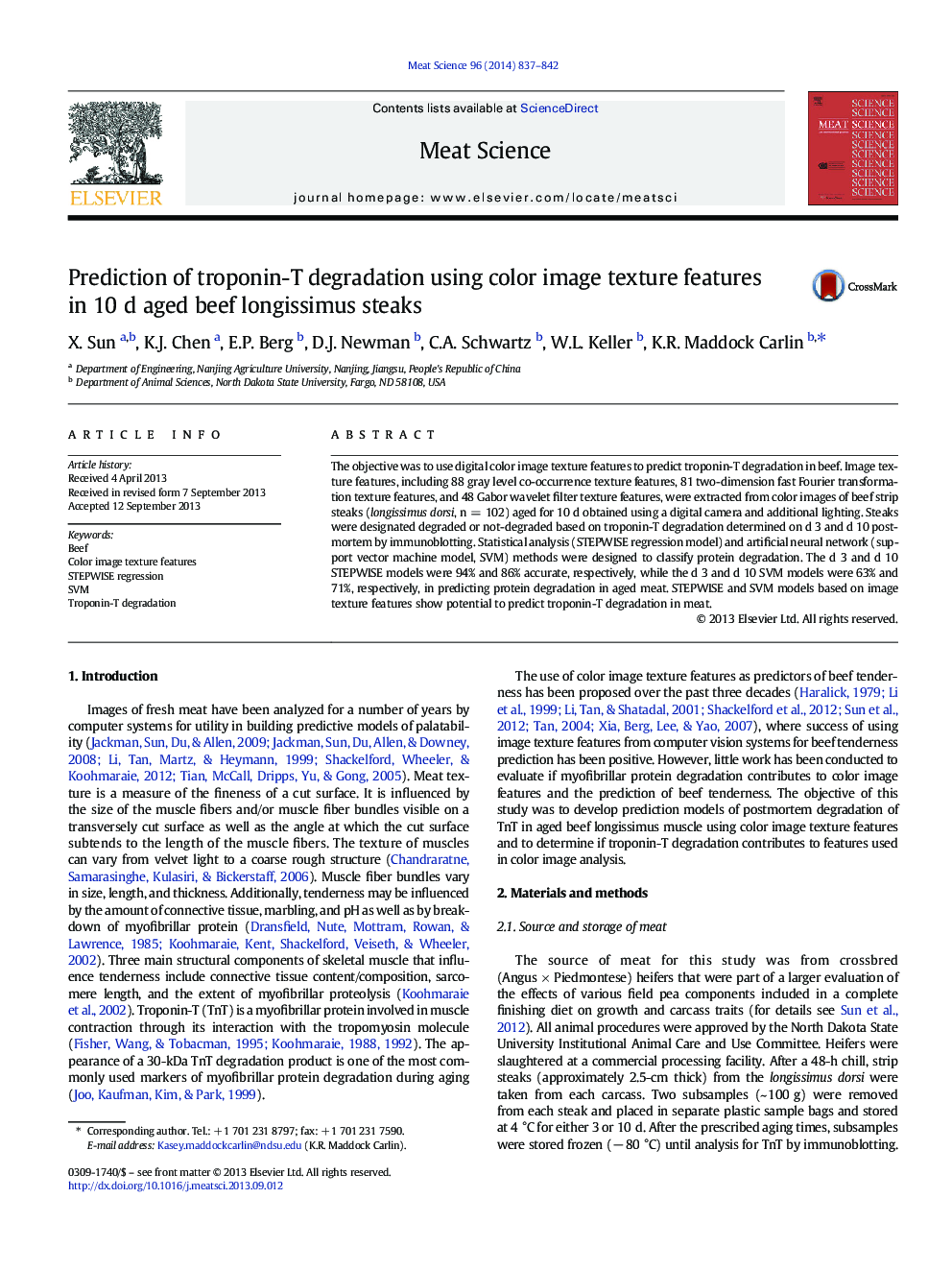| Article ID | Journal | Published Year | Pages | File Type |
|---|---|---|---|---|
| 5791845 | Meat Science | 2014 | 6 Pages |
â¢Texture features were extracted from digital color images of 10-d aged beef strip.â¢Troponin-T degradation was assessed by Western analysis in 3 and 10-d aged samples.â¢Stepwise regression and support vector machine prediction models were designed.â¢Stepwise regression model predicted protein degradation with 86% accuracy.â¢Support vector machine predicted protein degradation with 63% accuracy.
The objective was to use digital color image texture features to predict troponin-T degradation in beef. Image texture features, including 88 gray level co-occurrence texture features, 81 two-dimension fast Fourier transformation texture features, and 48 Gabor wavelet filter texture features, were extracted from color images of beef strip steaks (longissimus dorsi, n = 102) aged for 10 d obtained using a digital camera and additional lighting. Steaks were designated degraded or not-degraded based on troponin-T degradation determined on d 3 and d 10 postmortem by immunoblotting. Statistical analysis (STEPWISE regression model) and artificial neural network (support vector machine model, SVM) methods were designed to classify protein degradation. The d 3 and d 10 STEPWISE models were 94% and 86% accurate, respectively, while the d 3 and d 10 SVM models were 63% and 71%, respectively, in predicting protein degradation in aged meat. STEPWISE and SVM models based on image texture features show potential to predict troponin-T degradation in meat.
